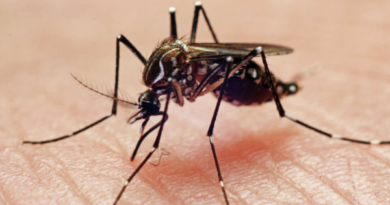What you must know about fertility 2023
While reproductive technology have made it simpler for couples to conceive, aging may have a negative impact on fertility, according to Dr. Apurva Satish Amarnath, a fertility specialist.
In the contemporary metropolitan environment, many couples may choose to wait for a particular period of time before deciding to create a family. This decision may be influenced by a variety of circumstances, including employment, financial stability, and the readiness to become a parent.
Yet, the longer a couple waits to conceive, the greater the drop in fertility and the lower the possibility that they will conceive naturally. Age is the most influential factor affecting a couple’s capacity to conceive, followed by lifestyle variables and certain medical issues.
The World Health Organization defines infertility as “the failure of a sexually active, non-contracepting couple to conceive within one year” (WHO). According to surveys published by the WHO, one in four couples in developing nations experienced infertility. As fertility rates in India have decreased over the years, the worldwide burden of this disease has remained to be a source of worry.
According to the American College of Obstetricians and Gynecologists Committee on Gynecologic Practice and the Practice Committee of the American Society for Reproductive Medicine, women’s fertility begins to diminish at around 32 years of age and accelerates after 37.

“Given the expected age-related decline in fertility, the increased incidence of disorders that impair fertility, and the increased risk of miscarriage, women over the age of 35 should undergo an expedited evaluation and treatment after six months of unsuccessful attempts to conceive, or earlier if clinically indicated. The group recommends more prompt diagnosis and treatment for women over the age of 40.
So, a healthy woman in her 20s has a greater likelihood of becoming pregnant than a woman older than 35.
What role does age have in fertility?
Here is how it happens. There are around two million eggs (oocytes) in a woman’s ovaries at birth, and no new eggs are added during her lifespan. Sixty percent of her ovarian reserve has been exhausted by the time she enters adolescence. From then on, around 1,000 eggs every cycle are lost, and by the time a female reaches 30–35 years of age, the amount of eggs she produces is drastically decreased. This makes it more challenging for her to conceive.
Nonetheless, the age at which a woman approaches infertility varies from woman to woman. While some women in their late 20s may have difficulties conceiving due to complex health conditions, others in their 40s who are in excellent health may still be highly fertile. In contrast, males see a gradual drop in fertility after age 50, as both sperm count and sperm quality decrease somewhat.
Tests such as Antimüllerian hormone (AMH), Estradiol, and Follicle-stimulating hormone (FSH) can be used to evaluate a woman’s ovarian reserve (FSH). Nevertheless, there is no method for determining the quality of the eggs. Men’s sperm count and quality may be determined using a battery of procedures, such as semen analysis, scrotal ultrasonography, blood testing, etc.
These are some other variables that might affect a couple’s capacity to conceive children.
In men
- Many lifestyle variables, including as obesity, smoking, alcohol and drug misuse, high blood pressure, elevated blood sugar, etc., may have a negative effect on the generation and motility of sperm in certain men. Several factors may result in a reduced sperm count and a drop in sperm quality. Male infertility may occasionally be caused by azoospermia, a disease in which the male partner’s sperm is absent.
- The quantity and quality of sperm can be affected by genetic variables.
- Sexual issues, such as premature ejaculation or a low libido, may be responsible for infertility in some males.
- Injuries to the reproductive organs brought on by trauma and illness may result in a decreased sperm count. Diseases such as measles and sexually transmitted diseases (STDs) such as gonorrhea might predispose males to have sperm of poor quality.
- Cancer and chemotherapy: Cancer treatments can negatively effect sperm production and motility in males.
In women
- Polycystic ovarian syndrome: Polycystic Ovarian Syndrome affects 1 in 10 to 15 women (PCOS). The disorder is characterized by an imbalance in reproductive hormones, and its incapacitating symptoms include irregular menstruation cycles, weight gain, hypertension, depression, acne, etc. PCOS is among the primary causes of infertility in women.
- Fibroids and Ovarian Cysts: Between 20 and 30 percent of women of reproductive age may have uterine fibroids. These are benign tumors that develop on the uterine wall. Cysts of the ovary are fluid-filled sacs located inside or on the surface of the ovaries. While these disorders are generally harmless, they can cause painful and irregular periods, excessive menstrual bleeding, and pregnancy complications in some women.
- Endometriosis is a painful disorder that happens when the uterine lining (endometrium) starts to grow outside of the uterus. It can impact the pelvic area, fallopian tubes, and intestines. This disorder is characterized by painful periods, pain and discomfort in the lower pelvic area, and irregular menstruation.
- Uterine polyps are tiny tissue growths that can develop in the uterine cavity or cervical canal. These conditions are not life-threatening, but they can cause significant bleeding and pain.
- Cancer and its treatment: Women sometimes disregard signs such as excessive bleeding, pain during sexual activity, frequent urination, and pelvic pain and discomfort. Yet, these may be indicators of significant medical conditions, such as uterine, ovarian, and endometrial malignancies. Cancer and its treatment, such as chemotherapy, can negatively impact a woman’s fertility.
- Sometimes, the fallopian tubes might become clogged due to endometriosis, pelvic adhesions, and other disorders. This will impede fertilization of the eggs.
- Lifestyle problems such as excessive weight gain, diabetes, and high blood pressure can reduce a woman’s fertility.
- Additional problems, such as hyperthyroidism and hypothyroidism, appendicitis, pelvic adhesions, etc., might impact fertility.
How can one circumvent their biological clock?
According to research, the reasons of infertility can arise from both men and women. While the male component contributes 30% to the infertility of a relationship, the female factor also contributes 30%. A further 30–40% of infertility is caused by a mix of male and female factors. The remainder is due to unknown factors.
There are a variety of ways to boost the probability of having a healthy child. Here are several examples:
- Do moderate exercise for a minimum of 45 minutes every day.
- Have a good and healthful diet, particularly one that is plant-based.
- Avoid junk meals and foods containing high amounts of sugar and trans fats.
- Avoid cigarettes and alcohol.
- Avoid steroid usage.
- Modify your lifestyle to put conditions such as hypertension and diabetes under control.
- Psychological well-being is equally essential, so practice yoga, meditation, or breathing techniques to manage your stress and maintain your composure.




